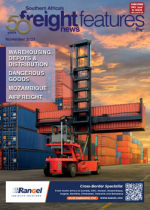Af rica's economic growth and development are inextricably linked to its ability to efficiently transport goods, and one of the most crucial aspects of this transportation network is airfreight. However, the continent faces numerous challenges in this regard, and there is a critical need for substantial investment in its airfreight infrastructure.Africa's airfreight infrastructure has long lagged behind other regions, which has hindered the continent's ability to fully participate in the global economy. The existing challenges are multifaceted and include underdeveloped airports, outdated technology, regulatory hurdles, and limited connectivity.Glyn Hughes, the director-general of The International Air Cargo Association (Tiaca), says that the need for investment in airfreight infrastructure cannot be overstated.“The Covid-19 pandemic revealed that the continent has too few hubs with particularly high-quality cool chain facilities, which means markets without such access are limited in terms of potential development in those areas,” he told Freight News. “Security issues persist in certain areas, posing potential constraints on foreign investment. In addition, a comprehensive assessment of border management procedures is required to enhance digital connectivity for improved efficiency and compliance. Moreover, streamlining regulatory bureaucracy is essential, as ad hoc permits and their associated costs can further impede market grow th.”Experts agree that the continent needs to not only look at physical infrastructure and improve airports to allow for more efficient air cargo operations, but regulatory obstacles need to be addressed, while improved connectivity and technology can address inefficiency and delays.“Some of the main challenges in the airfreight sector can be found throughout the continent – with the challenges of intra-African trade, levels of taxation, delays at customs and overall reliance on outdated processes being some of the most common,” said Hughes. The trade imbalance is another widespread phenomenon across all regions, albeit with distinct characteristics. For instance, in Central Africa, inbound cargo comprises roughly 75% of the total, with outbound cargo making up the remaining 25%. In contrast, East Africa experiences a reverse trend, with approximately 72% of cargo being outbound and only 28% inbound. West, southern, and northern regions strike a somewhat better balance, but these variations present a challenge for carriers seeking to offer cost-effective services. “It becomes complex to allocate capacity effectively when revenue is generated only for one segment of the journey. This is why, in some cases, providing dedicated freighter operations is challenging, and most of the capacity relies on belly cargo,” said Hughes, indicating that the African airfreight sector had many opportunities if challenges could be addressed. “Overall, I believe Africa should be producing more than 2% of global volumes so that would imply an underperforming market. There are some world-class operators and some great facilities.”

